Military Wireless Museum
LEFT: Inside the radio room of the British RAF Lancaster Bomber, as used during WWII. The picture shows the location of the R1155/T1154 receiver transmitter. The power suppllies, rotary generators in the air, were located below the operators table. The famous Bathtub key was afixed to the bench on the right (bit of a problem if your left handed !) and in various units an Indicator for the various Radar or radio based aids was located to the right of the receiver. In the Halifax bomber the receiver was actually mounted on its side due to limited space it its radio room.
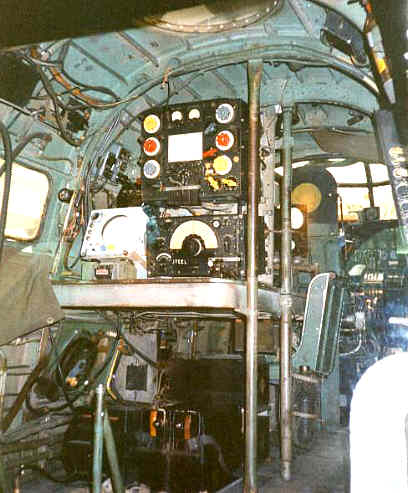
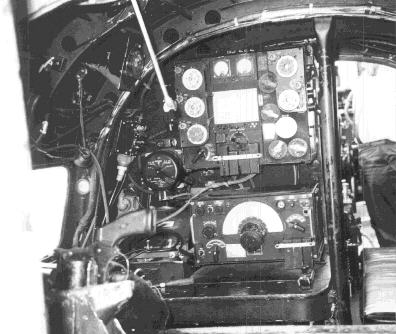
RIGHT: Another inside shot the RAF Lancaster Bomber, WWII, radio room. Again the R1155/T1154. Note the flare pistol in forground. The holder exited the plane underneath.
Same location shot but this time LEFT: inside a Canadian built Lancaster Bomber, WWII, its radio room using the Bendix TA12/RA10 configuration
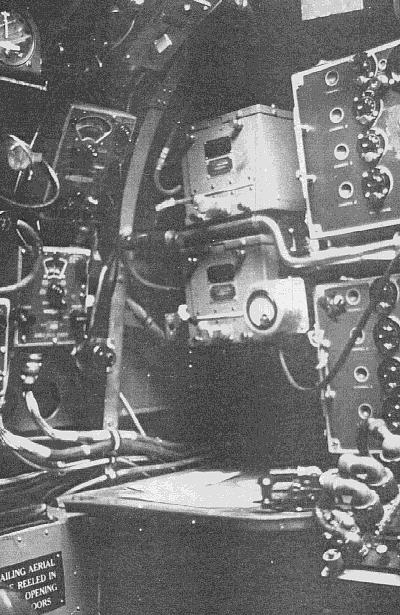
4 Units used inside the old Lanc, left to right, ASV radar, H2S radar, and two Gee sets, all awaiting restoration and eventual operation !! (I hope)
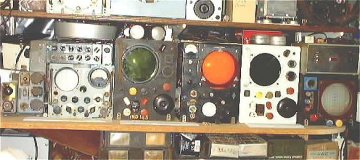
H2S, radar in Lancasters
The indicator with PPI and the attached height unit. I believe they were black in RAF use and blue in Coastal Command use.
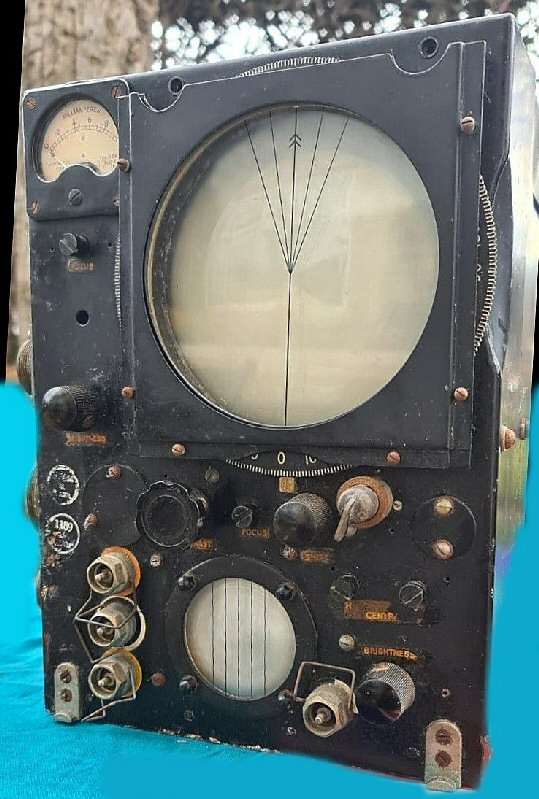
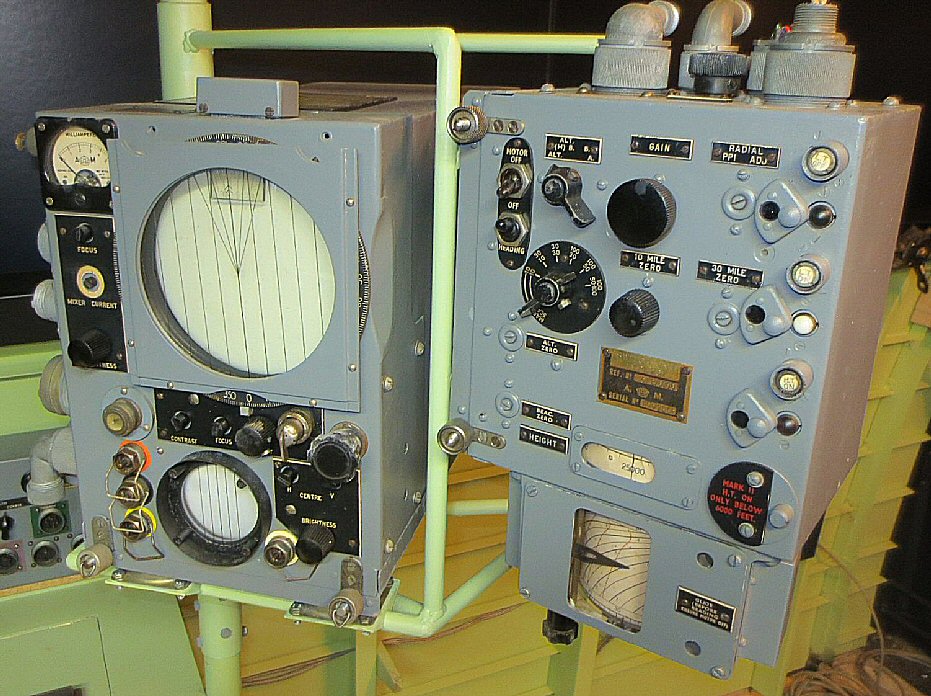
Inside the Type 168 indicator unit used for H2S.




I had the opportunity recently to visit two Lancasters, both non operational unfortunatly,one actually was 6 ft underground ! One was in Holland, the plaything of Jan and Paul Bodifee, the other in the UK lovingly created by Norman Groom at the Pitstone Museum.
Me in the UK Lancaster mock up, I could almost hear the engine noise!
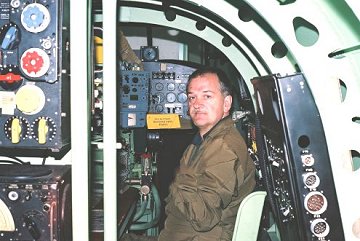
A Lancaster Story ......
A story near to H2S, but nothing to do with Radio/Radar. WW11, I was at Waddington working on Lancs, Ground Wireless Mech. Two Aussie Squadrons, 463 and 467, did not use H2S but the Blister was outside the A/C and the housing was inside the A/C. Lancs had a blind spot to enemy A/C attack between the tail guns and the mid-upper. There was a cone they could not reach and the H2S blister was at the apex. So the Aussies took off the blister, removed the housing and fitted the resulting hole with a removable hatch. A single 303 gun was mounted on a swinging arm on the port side and a small seat fitted between the end of the bomb bay and the hatch. There were footrests each side of the Hole. When the need arose the mid-upper gunner manned the position. No 'chute, strapped into the small seat, feet jammed in the foot rests. He swung the gun over and the attacking Aircraft got it. The manoeuvre was so successful that Jerry stopped attacking Lancs if there was no blister. So the Aussies just removed the blister only. Frank Hastings GW0BPV
Pictures inside the Halifax office, there it is a double decker with the radio room under the pilots seat and even the receiver has to be mounted on its side due to lack of space.
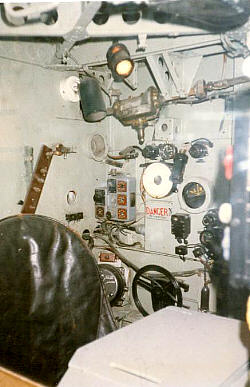 |
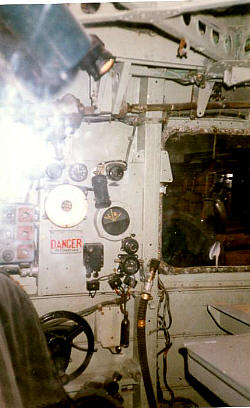 |
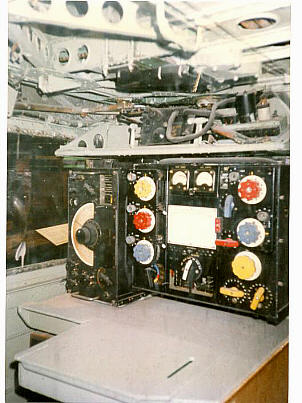 |
|
radio roomFig 1 |
Halifax Fig 2 |
Halifax Fig 3 |
Before & After, a restorers tale:
Before and after shot of one of the units here, the good looking unit, an Indicator Tpe 95, was in the same state as the one next to it but after a bit of TLC you can see the difference I think ?
The Gee receiver, R1355 now, before and after a touch up.
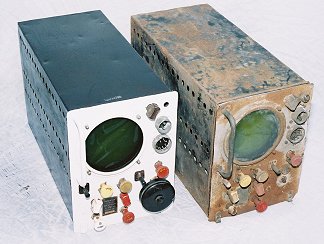
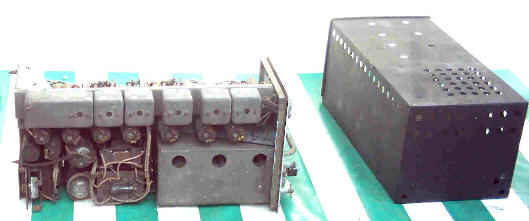
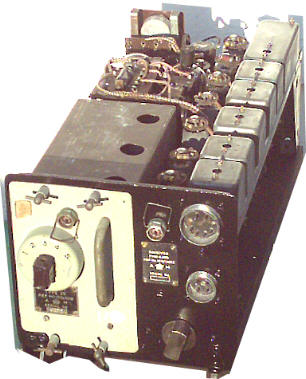
Lots of Gee now
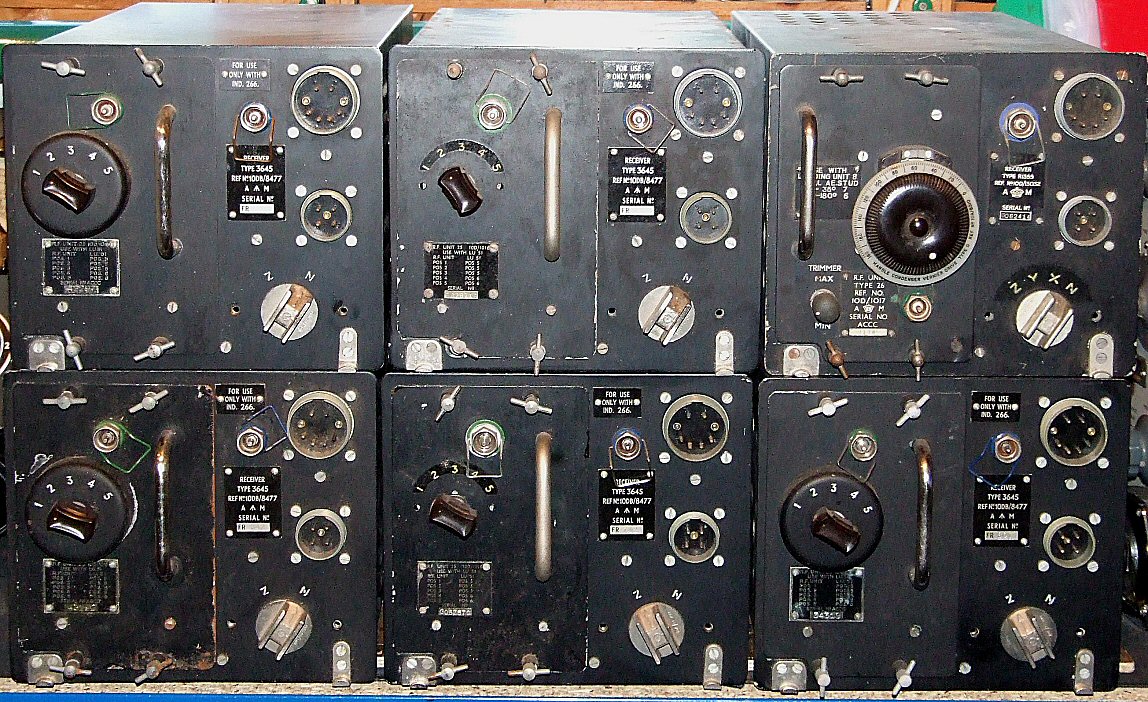
Other radar, navigation and DF items.
CARPET. Radar jamming system used by British and the USA.
This is CarpetII, British, used in Lancasters and the like.
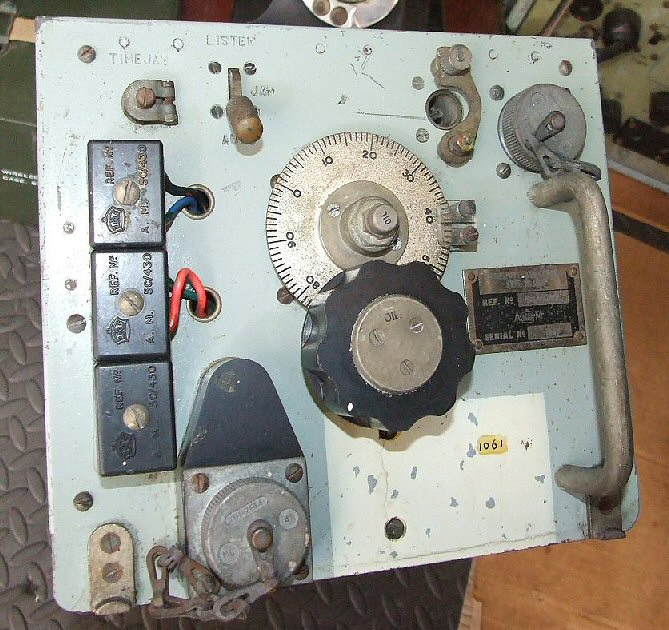
...................Carpet II video
Carpet III, US version, bigger, heavier etc....
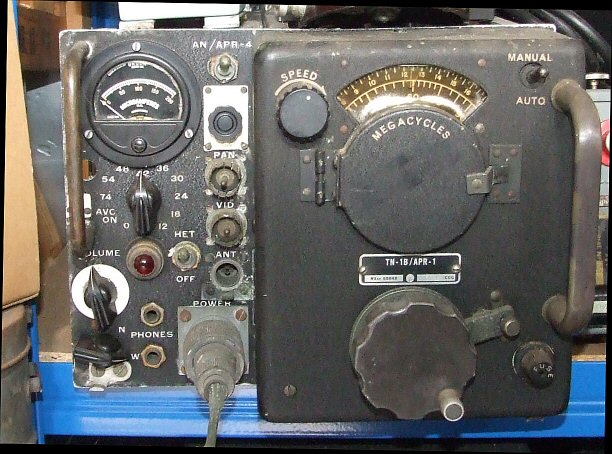
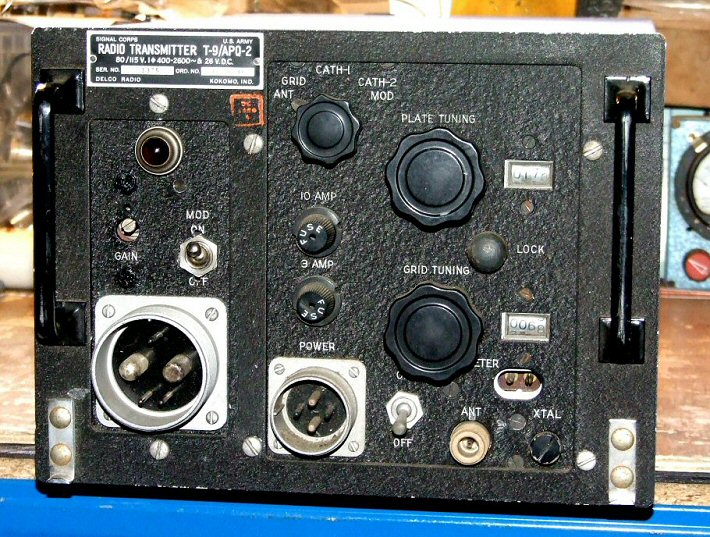
The APR-4 receiver is another one of those long-lived designs, beginning life before the war as the General Radio P-540 test receiver. It used five different plug-in units with a motor driven sweep ability to cover 38 to 4,000MHz, making it extremely versatile for its time.
APQ-2 "Rug" jammer. This was one of the earliest jammers, as evidenced by its miniscule 5 watt output, and covered the frequency range of 450MHz TO 720MHz in a single band. The initial target was the German Wurzburg fire control radar, which had been going through a variety of modifications to extend its frequency range, though the APQ-2 was later used in the Aleutians to counter new Japanese radar developments.
(info from AAF-RADIO website)
"Carpet2", the jamming unit for tackling German radars. The unit as it arrived, before cleaning etc.





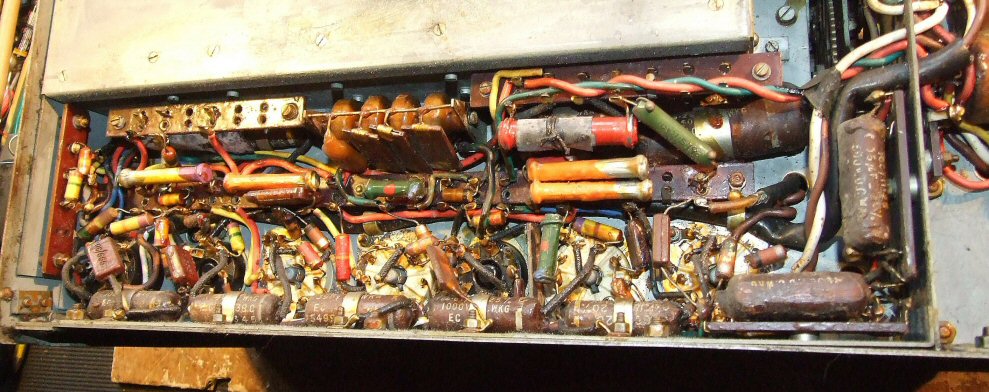
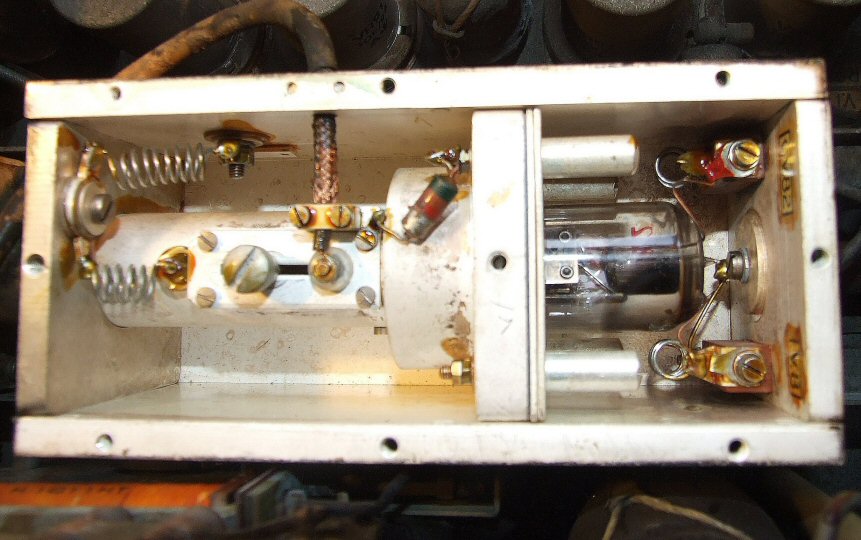
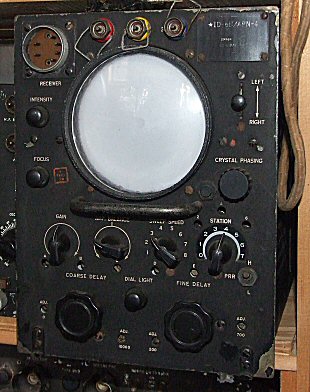
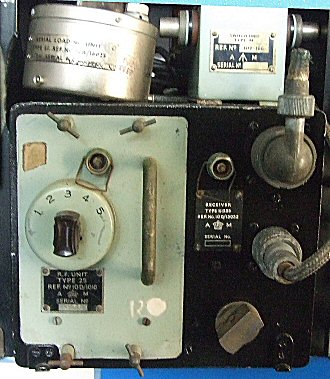
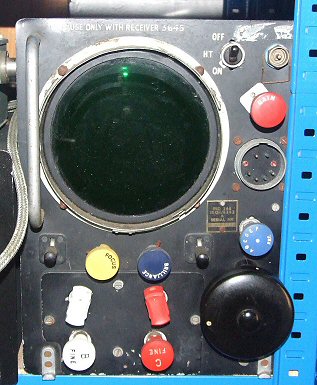

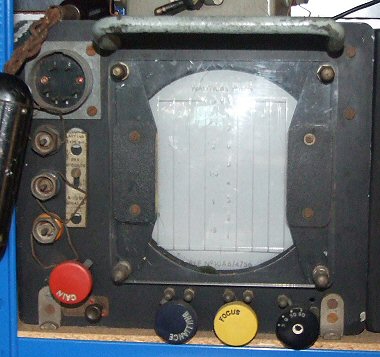
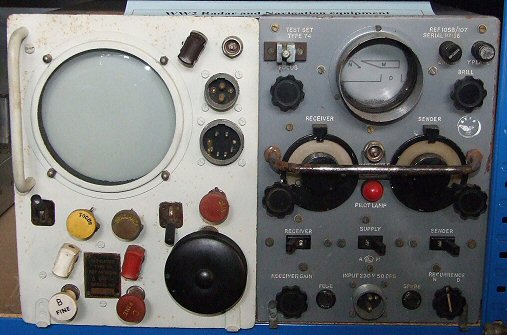
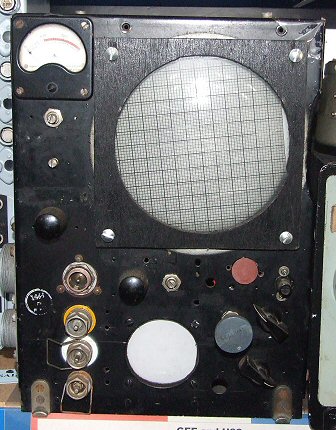
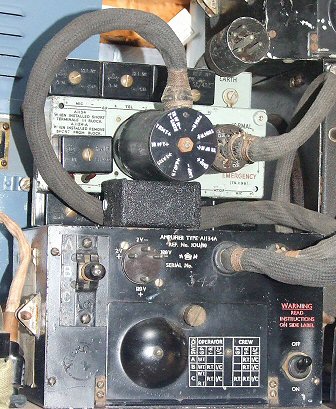
Monitor Type 28 ? British monitor Type 28 oscilloscope for H2S. Stores reference 10T/500. Also used as part of ASV (Aircraft-Surface Vessel) Mark X radar. more info needed if anyone can help?

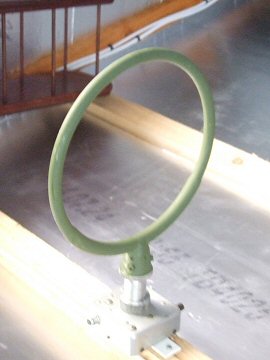
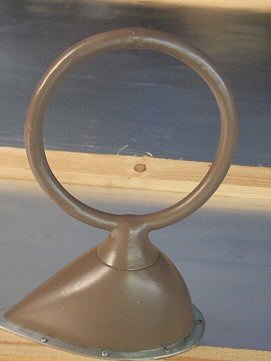
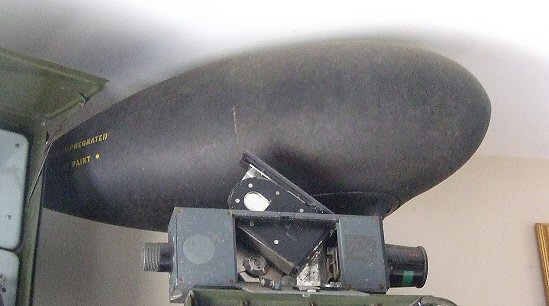
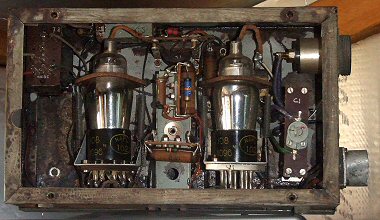
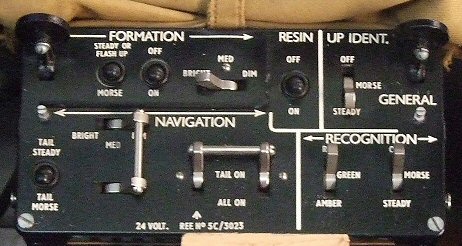

Send an e-mail to: Ben Nock, G4BXD
(If link does not work on your PC then send email to: [email protected] )
********* Pictures by G4BXD are G4BXD copyright ********







